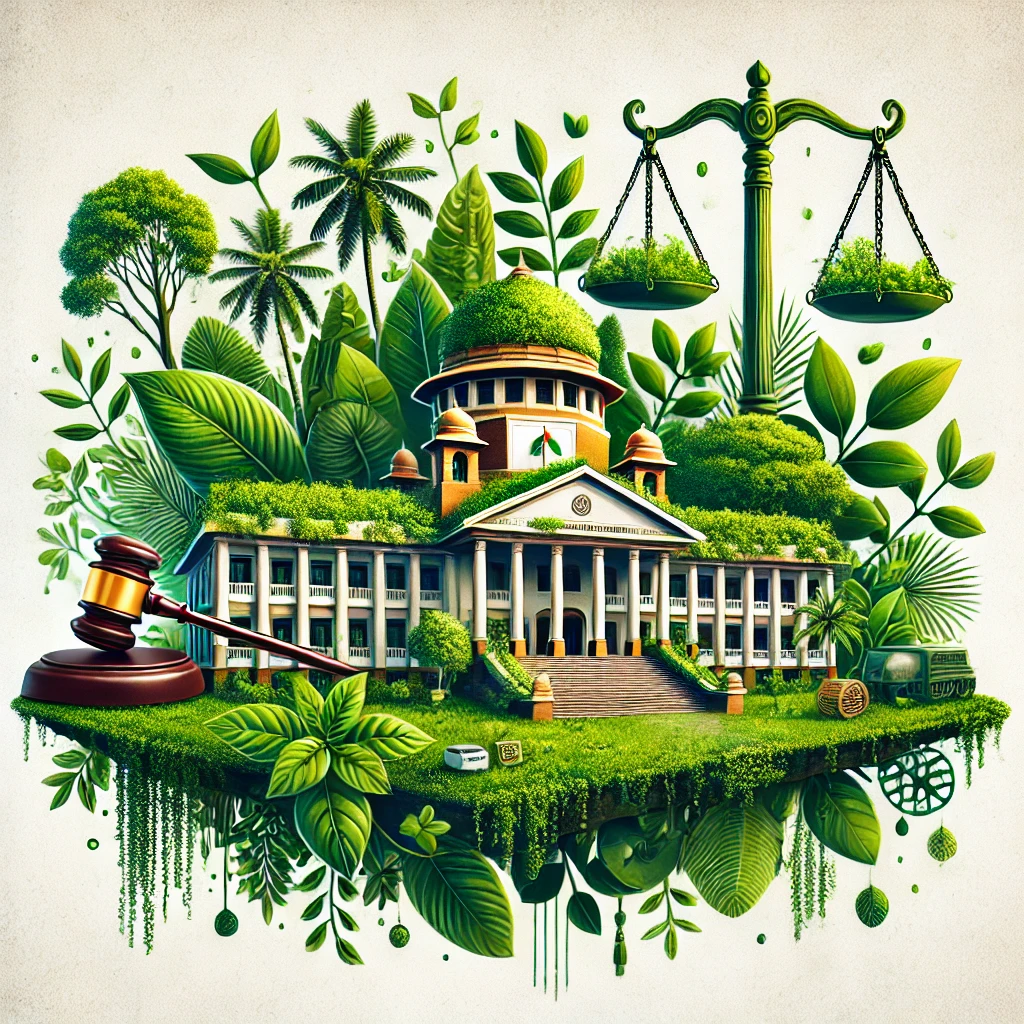Environmental laws at Singapore
Singapore is known for its strong commitment to environmental sustainability, with a comprehensive legal and regulatory framework aimed at protecting the environment and ensuring sustainable development. Given the country’s small size, limited natural resources, and rapid urbanization, effective environmental governance is crucial for maintaining a high quality of life for its citizens while balancing economic development.
Here’s an overview of the key environmental laws and policies in Singapore:
1. The Environmental Protection and Management Act (EPMA) - 1999
Purpose: The EPMA serves as the primary legislation governing environmental protection in Singapore.
Key Provisions:
Provides the legal framework for controlling pollution and managing waste, air, water, and noise pollution.
Authorizes the National Environment Agency (NEA) to regulate and enforce pollution control measures, issue licenses, and set environmental standards.
Specifies the types of environmental licenses required for industrial activities, including waste disposal, emissions, and effluent discharge.
Requires the implementation of Environmental Impact Assessments (EIA) for certain development projects to assess and mitigate negative impacts on the environment.
2. The Air Pollution Control Act - 1999
Purpose: This law regulates air pollution and emissions from industrial and vehicular sources.
Key Provisions:
Requires industrial facilities to obtain permits for air emissions and comply with air quality standards.
Mandates the control of particulate matter, sulfur dioxide, nitrogen oxide, and other harmful pollutants in the air.
Sets penalties for exceeding air pollution limits and requires continuous monitoring of air quality.
Encourages the use of cleaner technologies and fuels to reduce air pollution from industries and transportation.
3. The Waste Management and Recycling Laws
Purpose: Singapore has a suite of laws to manage waste, promote recycling, and encourage sustainable waste disposal practices.
Key Provisions:
The Waste Management and Recycling Regulations under the EPMA govern the collection, disposal, and recycling of solid waste in Singapore.
The Public Cleansing Act requires businesses to manage waste responsibly and segregate recyclables from general waste.
The Sewerage and Drainage Act mandates the management of sewage and wastewater to prevent pollution of water bodies.
Resource Sustainability Act (2019) promotes waste reduction, resource recovery, and the implementation of Extended Producer Responsibility (EPR), which holds producers accountable for the entire lifecycle of their products, including their disposal.
4. The Environmental Impact Assessment (EIA) Requirements
Purpose: The EIA framework ensures that major development projects assess and mitigate potential environmental impacts before implementation.
Key Provisions:
Certain projects, such as those that may significantly affect air, water, or land resources, are required to conduct an EIA before development approval is granted.
The Urban Redevelopment Authority (URA) and Building and Construction Authority (BCA) review EIAs, and recommendations are made to mitigate or reduce environmental impacts.
The government also works with businesses to encourage the adoption of best practices for sustainable development in construction, such as energy efficiency, waste management, and low-emission technologies.
5. The National Environment Agency (NEA) and Pollution Control
Purpose: The National Environment Agency (NEA) is Singapore’s primary body responsible for implementing and enforcing environmental laws and policies.
Key Provisions:
The NEA enforces laws related to pollution control, including air quality, waste management, and water pollution, through inspections and permits.
The NEA also promotes public awareness campaigns on sustainability and environmental protection, encouraging the adoption of green practices by citizens and businesses.
The NEA enforces penalties for pollution violations, such as fines for improper waste disposal or exceeding emission limits.
Pollution Control Measures: Under the NEA’s supervision, industries are required to install pollution control equipment and regularly monitor their emissions and discharges.
6. The Conservation of Nature and Biodiversity Laws
Purpose: Singapore has developed laws to conserve its natural heritage, protect biodiversity, and maintain green spaces within its urban environment.
Key Provisions:
The Wildlife Act governs the conservation of wildlife in Singapore, including the protection of endangered species, habitats, and the control of invasive species.
The National Parks Board (NParks) is tasked with managing and preserving natural parks, nature reserves, and green spaces throughout the city-state.
Singapore has also designated several Nature Reserves and Wildlife Reserves, including the famous Singapore Zoo and Jurong Bird Park, which focus on the conservation of species native to the region and the education of the public about wildlife protection.
The Parks and Trees Act governs the protection of trees, parks, and green spaces in urban areas, requiring permits for tree removal and encouraging planting initiatives.
The government has also committed to integrating nature into the urban landscape through the “City in a Garden” initiative, which aims to increase green spaces and biodiversity in the city.
7. The Coastal Protection Laws
Purpose: Singapore has a proactive approach to managing its coastal zones and protecting against the effects of climate change, such as rising sea levels.
Key Provisions:
The Coastal Protection Act (2009) regulates coastal protection works, including the construction of sea walls, tidal gates, and other infrastructure to prevent flooding and erosion.
Coastal protection projects must adhere to environmental guidelines that minimize damage to marine ecosystems, such as coral reefs and mangroves, while ensuring that the country’s land is protected from rising sea levels.
The Singapore Green Plan 2030 includes measures to safeguard the nation’s coastline and enhance resilience to climate change, such as the adoption of nature-based solutions like mangrove restoration.
8. The Green Building Laws and Initiatives
Purpose: Singapore has adopted laws and initiatives to promote energy efficiency and sustainable building practices in the construction sector.
Key Provisions:
The Building and Construction Authority (BCA) oversees regulations that require new buildings to meet certain environmental and sustainability standards.
The BCA Green Mark Scheme encourages developers to construct buildings that meet high energy efficiency, water conservation, and sustainable materials standards.
The Energy Conservation Act requires large energy consumers to report their energy consumption and adopt energy-saving measures.
Singapore promotes the use of renewable energy, especially solar energy, and has implemented incentives for building owners to install solar panels and adopt green technologies.
9. The Climate Change Laws and Policies
Purpose: Singapore has taken steps to reduce its carbon footprint and mitigate the effects of climate change.
Key Provisions:
Singapore’s Climate Action Plan aims to reduce greenhouse gas emissions and adapt to climate change by improving energy efficiency, enhancing renewable energy use, and promoting sustainable development.
The Carbon Pricing Act (2019) imposes a carbon tax on large emitters of greenhouse gases, encouraging businesses to reduce their emissions and adopt cleaner technologies.
The Singapore Green Plan 2030 outlines strategies to reduce carbon emissions and achieve net-zero emissions by the second half of the century. It also includes measures for sustainable urban mobility, green infrastructure, and waste management.
10. The Clean Energy and Sustainable Development Policies
Purpose: Singapore is investing in renewable energy sources and sustainable development practices to reduce its dependence on fossil fuels.
Key Provisions:
The Energy Market Authority (EMA) oversees the development of the energy market, with a focus on promoting energy efficiency and the integration of renewable energy into the power grid.
Singapore’s government has set a target of solar energy generation to meet 2% of the nation’s energy needs by 2030, with plans to expand solar capacity significantly.
The government also promotes the development of sustainable transportation systems, including electric vehicles and a comprehensive public transportation network.
Conclusion
Singapore's environmental laws and policies have been instrumental in transforming the city-state into one of the greenest and most sustainable urban environments in the world. The country has developed a robust legal framework that addresses pollution control, waste management, climate change, energy efficiency, and biodiversity conservation. Despite its limited natural resources and challenges such as land scarcity and the impacts of climate change, Singapore remains committed to balancing environmental protection with economic development. The continuous enforcement of environmental regulations and the promotion of green technologies and sustainable practices will ensure that Singapore remains a leader in environmental governance.




























0 comments